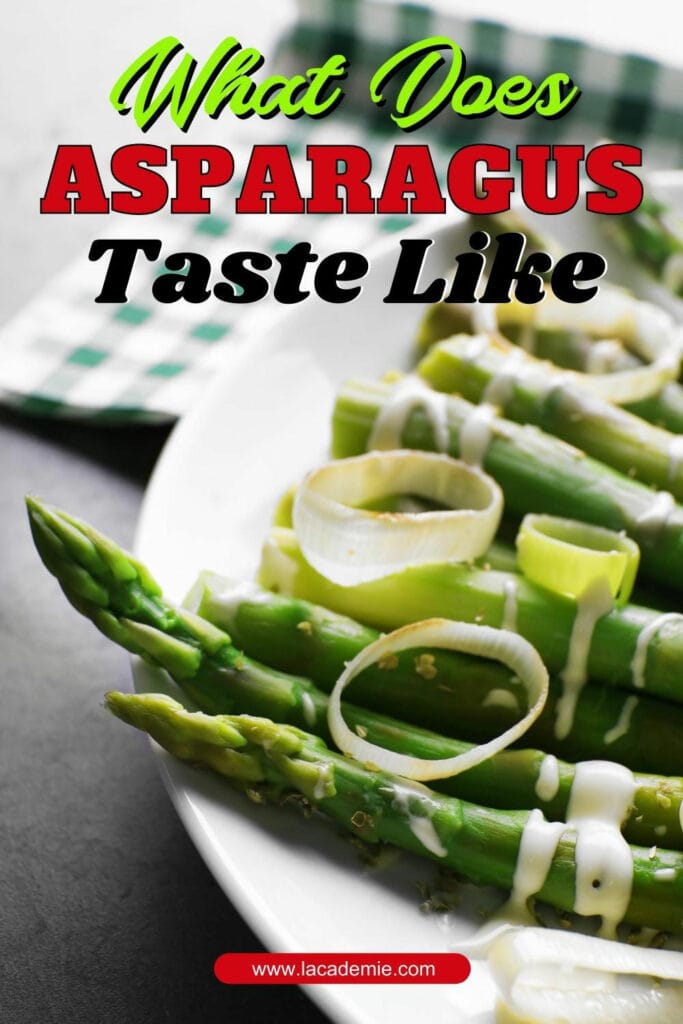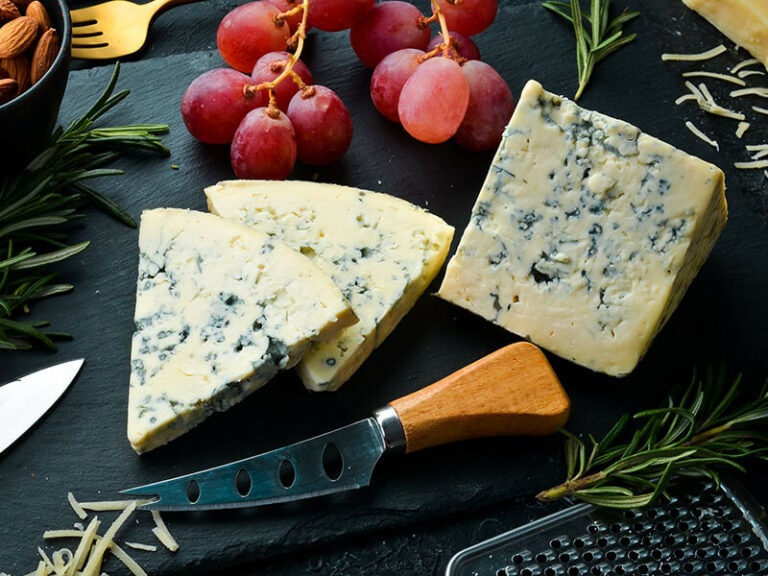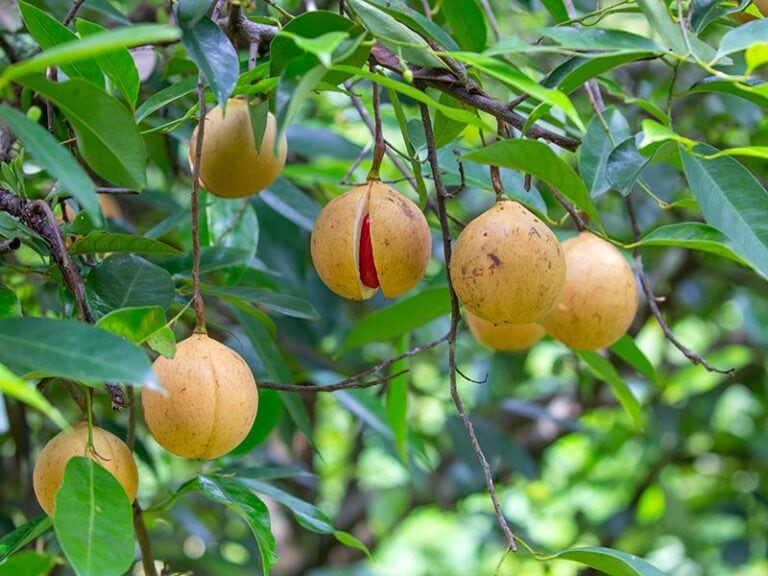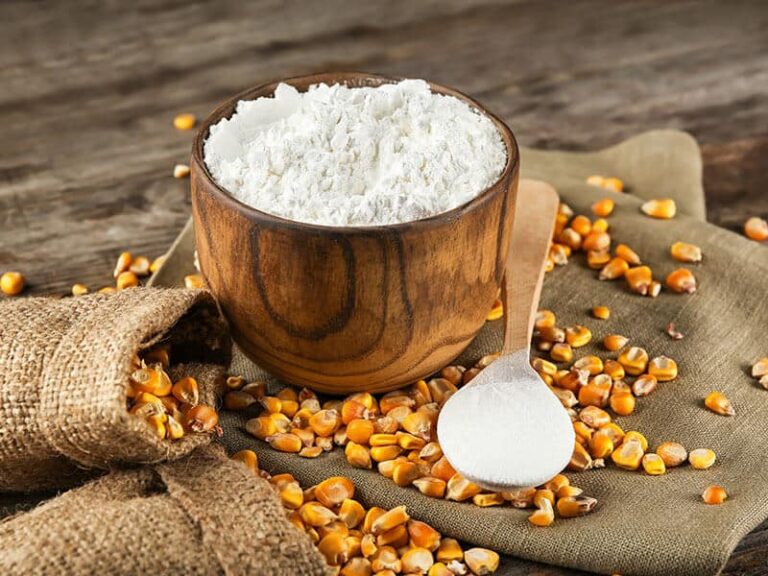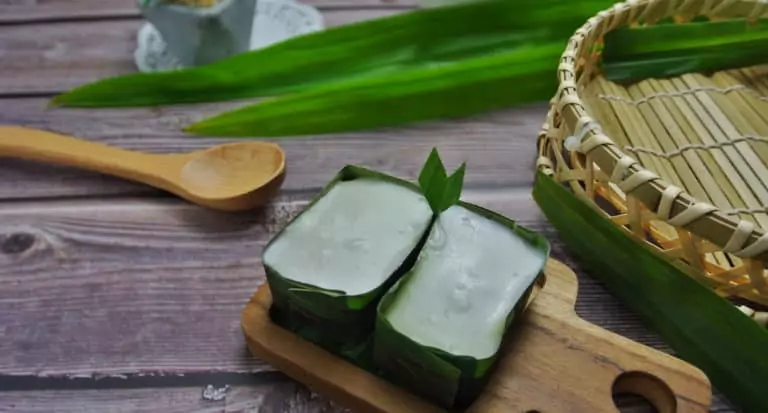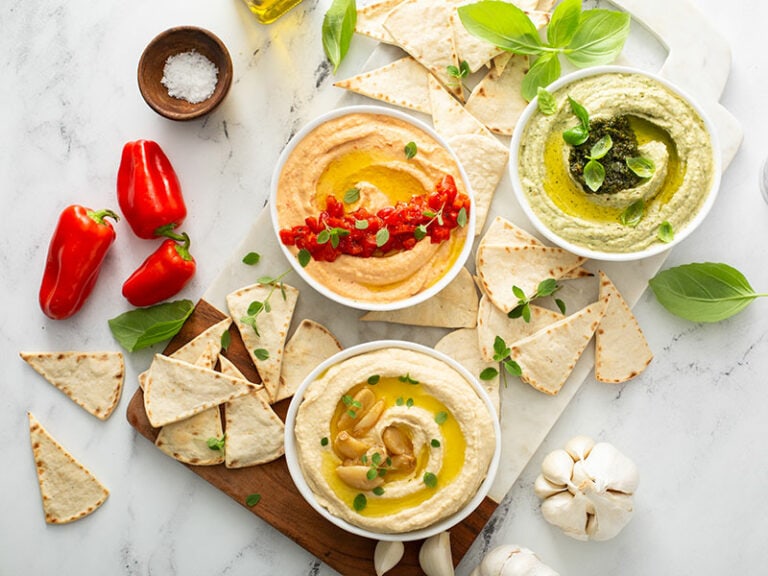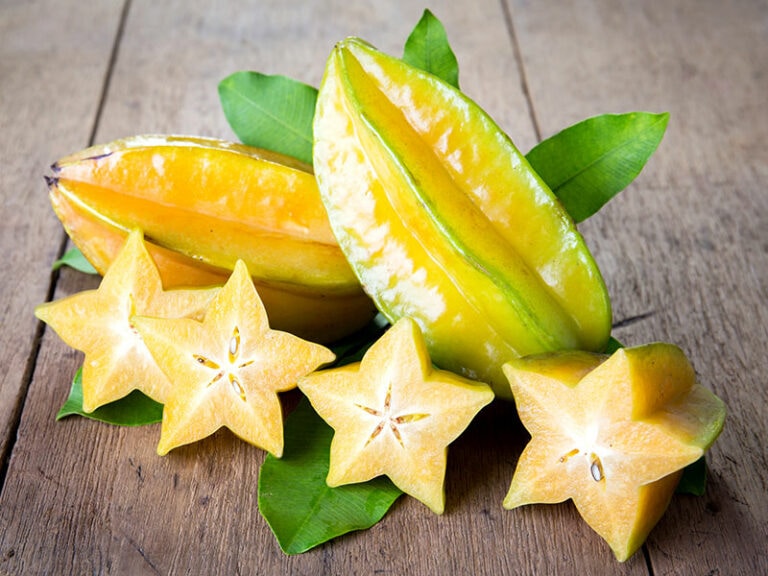You may wonder: what does asparagus taste like when seeing some exciting recipes that call for asparagus. Although it is a popular vegetable all over the world, not everybody loves its flavor.
I am writing this post to give you a detailed description of the asparagus taste and other fascinating information related to asparagus. Let’s scroll down and have another look at asparagus.
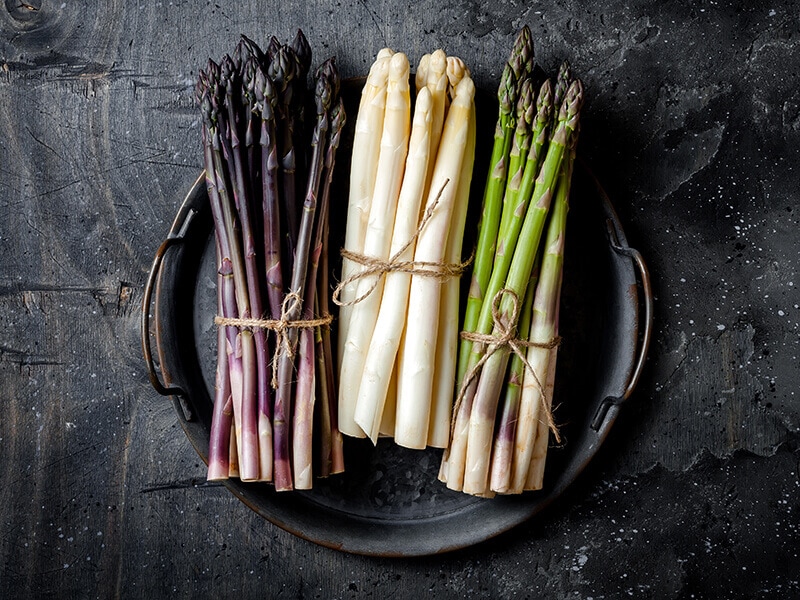
How Does Asparagus Taste?
Generally, asparagus has a subtle sweet-bitter taste combined with an earthy grass flavor. There are various kinds of asparagus. Each type has a slightly different flavor.
While green and white have the same flavor, purple asparagus tastes sweeter. And wild asparagus has a more delicate flavor.
A Brief Overview Of Asparagus
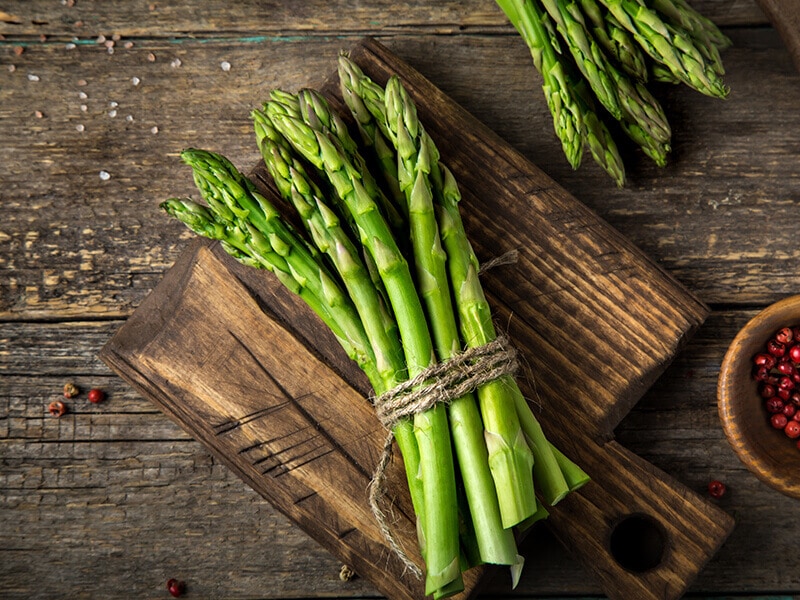
Asparagus is one of the variations of the Asparagaceae family as a young shoot of a lily plant. Asparagus is also a favorite vegetable in many countries. People often like to compare asparagus with broccoli, another highly nutritious vegetable.
There are 300 different types of asparagus, and the four most popular ones are green, purple, white, and wild asparagus.
Green asparagus originates in Europe, North Africa, and West Asia. Purple asparagus is native to Italy, whereas white asparagus is grown in Spain and Netherlands, and wild asparagus can be found in Western and Great Britain. (1)
Take A Closer Look At The Distinct Flavor Of Asparagus
Asparagus has a distinct flavor. If you wonder whether uncooked asparagus is edible, the short answer is “yes.” Raw asparagus is very crunchy. However, each type of asparagus tastes slightly different from the others. In this article, I will provide detailed descriptions of the four most popular types of asparagus.
Let’s explore the recognizable features of these four types of asparagus!
- Smell: The fresh asparagus does not give out any odor.
- Flavor: The taste of green asparagus is considered a combination of broccoli, green beans, and artichoke. Unlike other vegetables, the bigger asparagus spears are, the more tender they taste.
You can find asparagus in various European dishes, and it goes out of the nation these days.
- Texture: The asparagus has a firm and crunchy texture. When being cooked, asparagus is tender. Moreover, the older asparagus is also soggier than the young asparagus.
Besides, just like the texture of mushrooms, asparagus texture makes it easier to absorb the flavor of other ingredients it is cooked with.
- What to serve with: You can eat raw and cooked asparagus thanks to its tender texture. To cook with asparagus, some ingredients you can use are lamb, cheeses, chicken, egg, or bacon. One notable example is bacon asparagus bites—a famous side dish for Keto diets.
Note: Do not cook it for a long time because it will lose its flavor and become very limp.
Green Asparagus
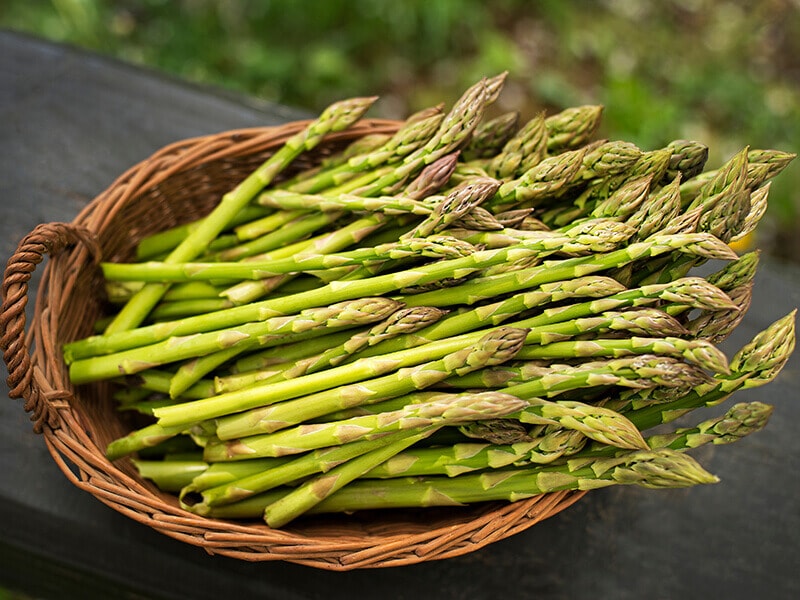
It is the most common asparagus found everywhere and widely used all over the world. Green asparagus is packed with many essential nutrients.
Green asparagus tastes mild and slightly bitter. It also tastes the grassiest among the four types. When boiled, this type has a brighter green color and tender texture.
The taste of green asparagus goes well with lamb, chicken, ham, bacon, or even fish. People usually roast or grill green asparagus so they can enjoy the smoky but fresh flavor. Due to these 2 features, roasted asparagus can be served as a side dish for cod fish.
White Asparagus
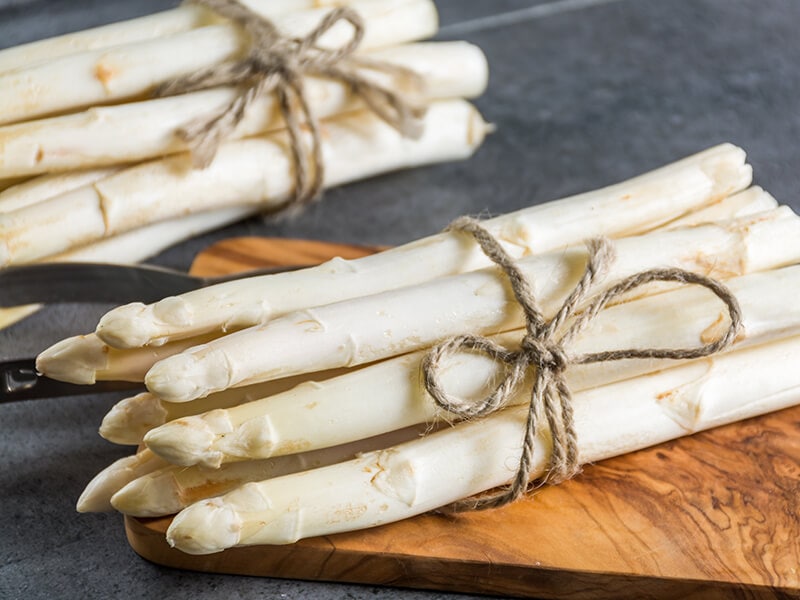
White asparagus is native to the Netherlands and Spain. If you compare white asparagus to green asparagus, the latter tastes slightly sweeter. By the way, its texture is more tender. Also, white asparagus spears are bigger than green ones, including both their tips and stalks.
It is white because of growing in the dark. Due to the non-popularity, you will find it difficult to buy white asparagus. It is also more expensive than other types of asparagus; it can cost up to double the price compared to different types of asparagus.
As same as asparagus, white asparagus is also usually grilled and roasted to eat. It also works well with melted butter. However, because of the more enormous stalks, you should peel the bottom of white asparagus before cooking.
Let’s clarify why Germans love to eat white asparagus! Watch this video:
Purple Asparagus

Purple asparagus variation is considered one of the most nutrient-rich types, just behind green asparagus. Purple asparagus tastes quite sweeter than the others, thanks to the twenty percent higher sugar amount contained in it.
Excluding the different tastes, purple asparagus presents the same size as green asparagus but in violet color.
Wild Asparagus
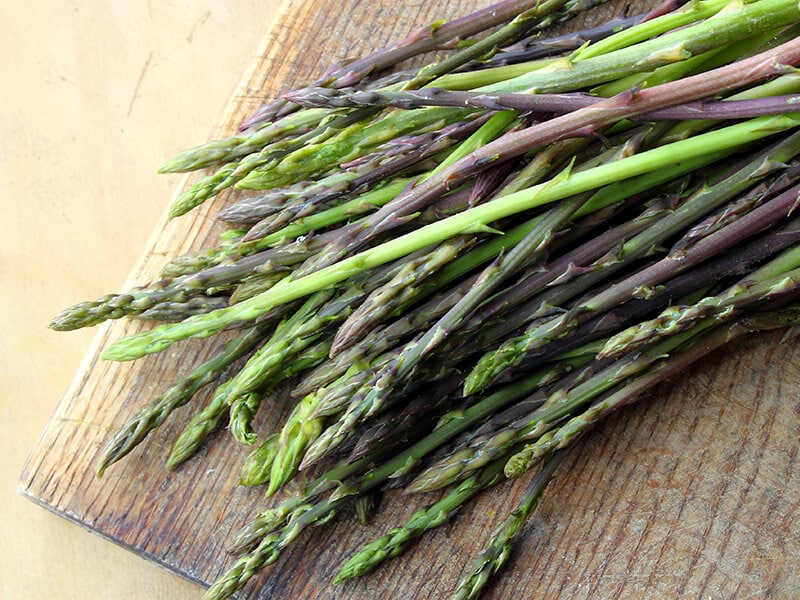
Apart from the three types of asparagus listed above, although wild asparagus comes from the same family, it is an insect-pollinated plant. You can find wild asparagus frequently in Western Europe and Britain.
Wild asparagus appearance is longer and thinner than green asparagus. However, wild asparagus and green asparagus have a similar taste and texture. Therefore, you can use wild asparagus as one of the green asparagus substitutes.
Is Asparagus Beneficial For Your Health?
Asparagus is not only delicious but also nutrient-rich. Besides, it is low in calories (20 calories per cup), asparagus is packed with a high level of vitamins (A and C), minerals, and antioxidants such as potassium, iron, or calcium.(2)
Some recognizable health benefits that asparagus offers to you:
- Improves digestion
- Helps in the lose-weight process
- Lowers blood pressure
- Supports cardiovascular health
- It prevents certain types of cancers.
- Lowers risk of depression
4 Excellent Ways To Store Asparagus
Because the season of asparagus is in spring and ends in the early summer, you will need some easy-to-follow storage methods to preserve your asparagus. Save these storage tips to prolong your asparagus shelf life so you can enjoy it all year round.
1. Refrigerating
You can refrigerate both raw and cooked asparagus. But I recommend you should refrigerate raw asparagus to extend its shelf life.
Raw Asparagus
After trimming the bottom of the asparagus to make asparagus lasts longer by soaking up water, you have two options to refrigerate raw asparagus:
- First, do not wash your asparagus with water if you do not want it to spoil faster. Next, trim the bottom of asparagus stalks and stand them up in a glass jar added with water.
You can loosely cover the jar with a plastic bag (optional) before placing it in the refrigerator. The fresh asparagus can keep for up to a week if you refrigerate it properly.
- Wrap a bunch of asparagus stalks in a wet paper towel and place it in the crisper of your refrigerator. Wrapping like that helps asparagus moist and lengthens its shelf life for 2 to 4 days.
Store Cooked Asparagus
Asparagus is one of the most famous side dishes. But what if you make too much? Here is a simple way to protect your cooked asparagus.
- Store your cooked asparagus in an airtight container or wrap it with aluminum foil or a plastic bag.
You should finish it as soon as possible since it will quickly turn mushy and soggy after being stored in the refrigerator.
2. Freezing
Here are the detailed instructions for freezing the asparagus thoroughly:
- Cut off the bottom of the asparagus stalks. Then divide them into two parts, including small and large stalks.
- Then, blanch small asparagus stalks in 2 minutes, and it takes 5 to 6 minutes to blanch the larger ones.
- After blanching asparagus, place them in ice water to maintain the fresh green color and crunchy texture.
- Allow them to cool and pat them with a paper towel to dry. Then, place them in an airtight container or a heavy-duty freezer bag and put them in the freezer.
3. Pickling
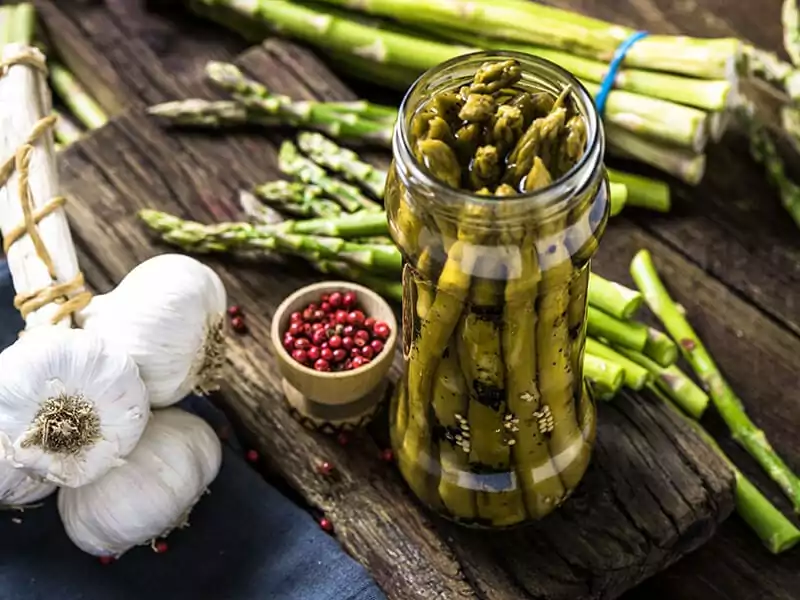
If you have more than you can use, pickling asparagus will be the most cost-effective way. What’s more, you can enjoy asparagus when it is off-season. People usually add pickled asparagus to their salad or serve it with other main dishes.
Give this delicious spicy pickled asparagus a go! You can see this video to know more:
4. Canning
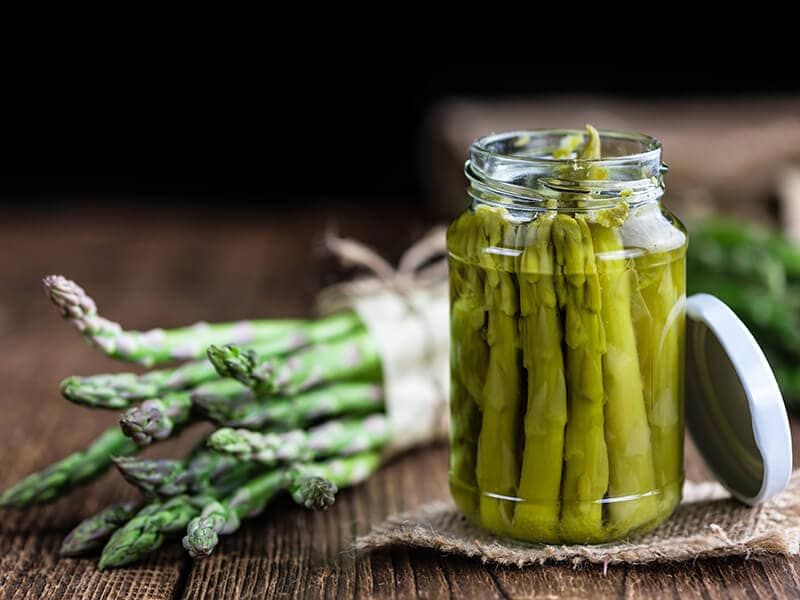
Some may think canning is similar to pickling. But what makes it stand out are:
- The brine of canned asparagus requires more straightforward ingredients, including canning salt and water.
- You have to own the pressure canner to pressurize the lids of the canning jars tightly.
- The crucial thing is, canned asparagus can keep for up to 5 years at room temperature.
Follow this detailed instruction to make your canned asparagus easier and more appropriate!
How To Tell If Your Asparagus Is Bad?
While fresh asparagus tastes wonderfully with a mild and slightly bitter flavor, spoiled asparagus tastes sour and terrible. Eating rotten asparagus causes nausea, diarrhea, stomach pain, and other illnesses.
Unlike other vegetables, the identifying signs of spoiled asparagus are not apparent. Check your asparagus occasionally and toss it right away if you notice any symptoms below.
1. There Is A Discoloration Of Your Asparagus.
The discoloration is the most recognizable rotten sign of asparagus. If your asparagus turns gradually from green, white, or purple to yellow, throw it right away.
2. Your Asparagus Starts To Grow Mold.
You know your asparagus is spoiled when it grows mold. The mold will appear from the tip to the stalks. If you see your asparagus tip is moldy, toss it.
3. An Unpleasant Smell Is Also A Noticeable Sign.
Most types of asparagus do not give out any strong smell. If your asparagus smells strange or foul, it is spoiled.
4. The Asparagus Tips Are Slimy.
Asparagus tips are the first part that will be spoiled, and you may ignore them. The asparagus tips will turn from green to dark green, then black. Do not eat asparagus with slimy tips.
How To Enhance The Flavor Of Asparagus?
Some people do not like asparagus because of its solid grassy taste. Do not worry. I will give you some tips to reduce the grassy flavor of asparagus and make it even tastier.
Choose The High-Quality Asparagus
Pay attention to the appearance of the asparagus that you are going to pick home, whether it has any bad signs I have mentioned above or not, including discoloration and slimy tips.
Also, just buy asparagus sold in a bunch that stands upright and has the same size asparagus stalks.
Store Asparagus Thoroughly
You can prolong the shelf life of asparagus and keep its flavor and texture by using the four excellent storage methods I have introduced above, including refrigerating, freezing, pickling, and canning. Each technique brings different results of asparagus.
Do You Know How To Prepare Asparagus?
Before cooking asparagus, you have to prepare it well to enjoy its best taste. After washing the asparagus, you need to trim the bottom part of the asparagus because it is difficult to chew even when it is being cooked.
Do Not Forget The Butter
Adding the butter while cooking asparagus helps enhance the flavor and smell of fresh asparagus. However, use fresh-tasting butter only. Have some leftovers? Make sure you store them in high-quality butter keepers to retain their optimal flavors.
Your Asparagus Is Bitter, What To Do Now?
When you’re in a pinch, it’s also acceptable to use lemon extract. While there are quite a few differences between lemon juice and lemon extract, it’s okay to use them interchangeably in this case.
Flavor The Cooked Asparagus With Herbs
Because the asparagus does not give out any featured smell, flavoring the asparagus dish with aromatic herbs works surprisingly—asparagus pairs well with lemon balm, lemon-scented herbs, dill, chives, and tarragon.
How To Cook Asparagus To Make It Tastier?
Because of the mushroom-like texture, the flavor of cooked asparagus depends on how you cook it. By the way, do not overcook asparagus because it will make asparagus taste more bitter.
Below are some common ways to cook asparagus effectively
Blanching
After washing and trimming asparagus spears, boil them in salt water for 2 minutes if they are small and 5 to 6 minutes if the stalks are large.
Place blanched asparagus spears immediately in a bowl of ice water to keep the crunchy texture and fresh green color.
Steaming
You can steam the asparagus by using the steamer. Place washed and trimmed asparagus on the steaming rack and let it steam for 3 to 4 minutes. Do not forget to cover the steamer tightly. Furthermore, steamed asparagus has a softer texture.
Roasting
Roasting asparagus is one of the most amazing cooking asparagus methods. Here are the instructions to make oven-roasted asparagus:
- Preheat the oven to 400 degrees Fahrenheit
- Line the baking tray with aluminum foil
- Spread asparagus spears on the baking tray
- Add olive oil and flavor asparagus with salt and black peppers
- You can also add extras, such as cheeses or bacon.
Besides, roasting asparagus by using a grill is not a bad idea when having a picnic or party in the garden yard.
Griddled
Griddled asparagus is a favorite type of cooked asparagus of many people as it reduces the grassy flavor of fresh asparagus and brings asparagus a mouth-watering appearance.
To griddle asparagus, you have to:
- Heat the griddle or griddle pan up
- Add olive oil on the griddle or griddle pan
- Place the washed and trimmed asparagus on
- Cook it for 2 to 3 minutes
- Add salt and black pepper at the end of the cooking process
Stir-Frying
Asian people often enjoy asparagus by stir-frying it. You can stir-fry asparagus with other vegetables. However, you just need 2 to 3 minutes to cook asparagus, so do not add it at the beginning of the cooking process. Adding butter to this method is also a good idea!
Broiling
It takes you 8 to 12 minutes to broil asparagus. All you have to do is preheat your oven or toaster oven, spread the prepared asparagus on the baking tray lined with aluminum foil, add olive oil, and let your asparagus cook.
You can also add salt and pepper to enhance the flavor of the dish.
Amazing Asparagus Recipes You Should Not Miss!
If you do not have any idea about asparagus recipes, do not miss it. I will introduce some excellent recipes to help you expand your daily menu.
1. Oven-Roasted Asparagus
This is the easiest asparagus recipe and also the most popular way to cook asparagus. The taste is salty and savory, and there is no more bitter taste of fresh asparagus.
2. Roasted Asparagus With Bacon And Feta Cheese
The combination of savory, mild, and fatty tastes of this recipe will not disappoint you. The ingredients are also available and straightforward in any kitchen. Save this recipe for later uses. You will not regret it!
3. Wrapped Asparagus
Another asparagus recipe with bacon, they were born for each other. There is no doubt that the taste of asparagus and bacon combined is a flavor explosion!
Do not miss this easy and quick asparagus and bacon recipe! Watch this video to know:
FAQs
Below are some questions you may wonder about related to asparagus. I hope my answer can clarify your curiosity.
Share Your Experience With Asparagus Flavor!
Excluding the slightly different taste of many types of asparagus, you should choose the high-quality one to enjoy the best flavor of asparagus. High-quality asparagus also takes a longer time to be spoiled than a low-quality one.
If you are no longer curious about the taste of asparagus and other information after reading my article, please do not hesitate to like and share it with your friends and family.
If you have tried asparagus or my suggested recipes above, let me know by leaving a comment in the comment section. I will be back soon with other helpful information. Thank you for spending your time reading this.
References
- En.wikipedia.org. 2021. Asparagus – Wikipedia. [online] Available at: <https://en.wikipedia.org/wiki/Asparagus>.
- Medicalnewstoday.com. 2021. Asparagus: Nutrition, benefits, and risks. [online] Available at: <https://www.medicalnewstoday.com/articles/270805#nutrition>.
